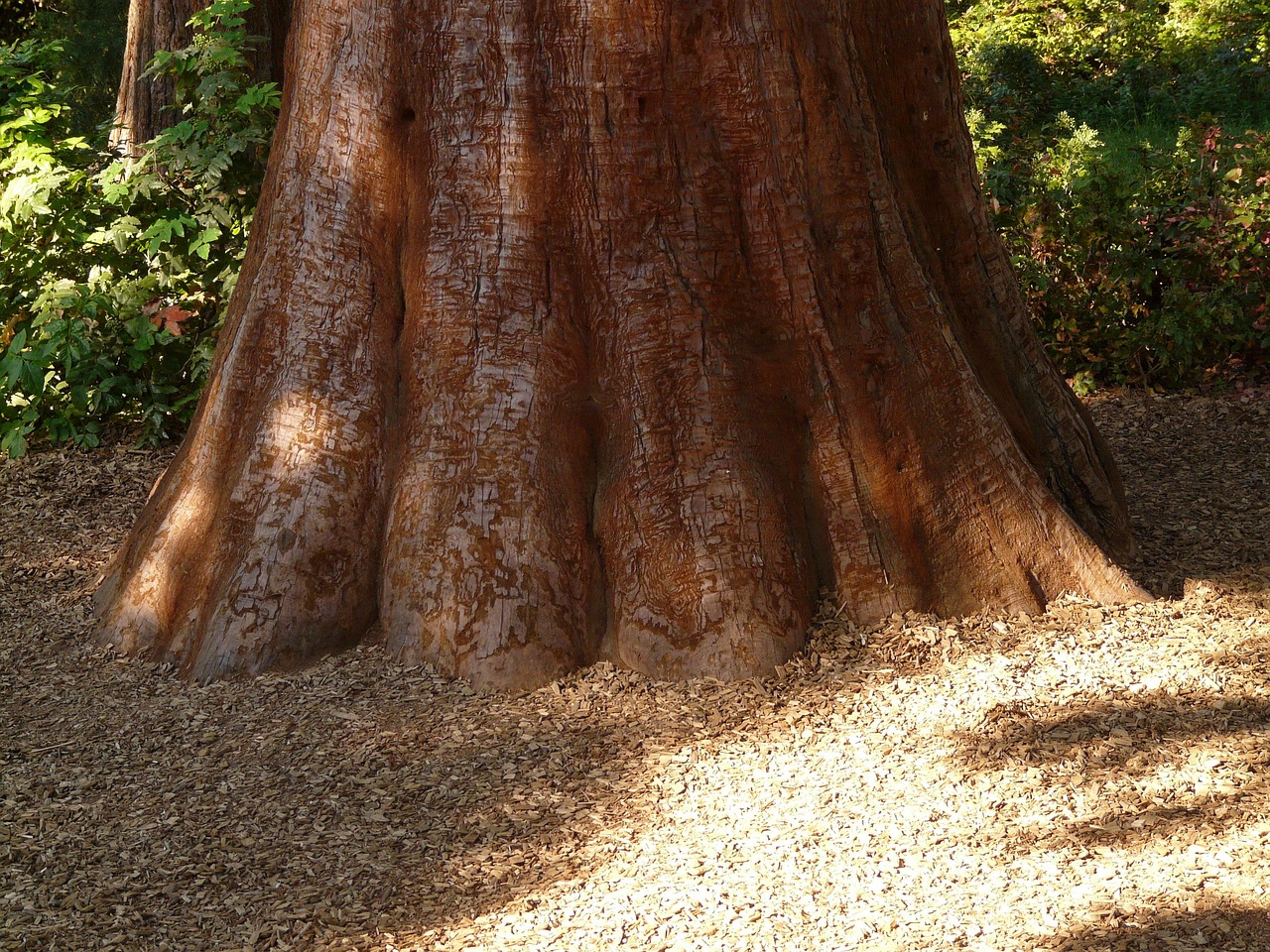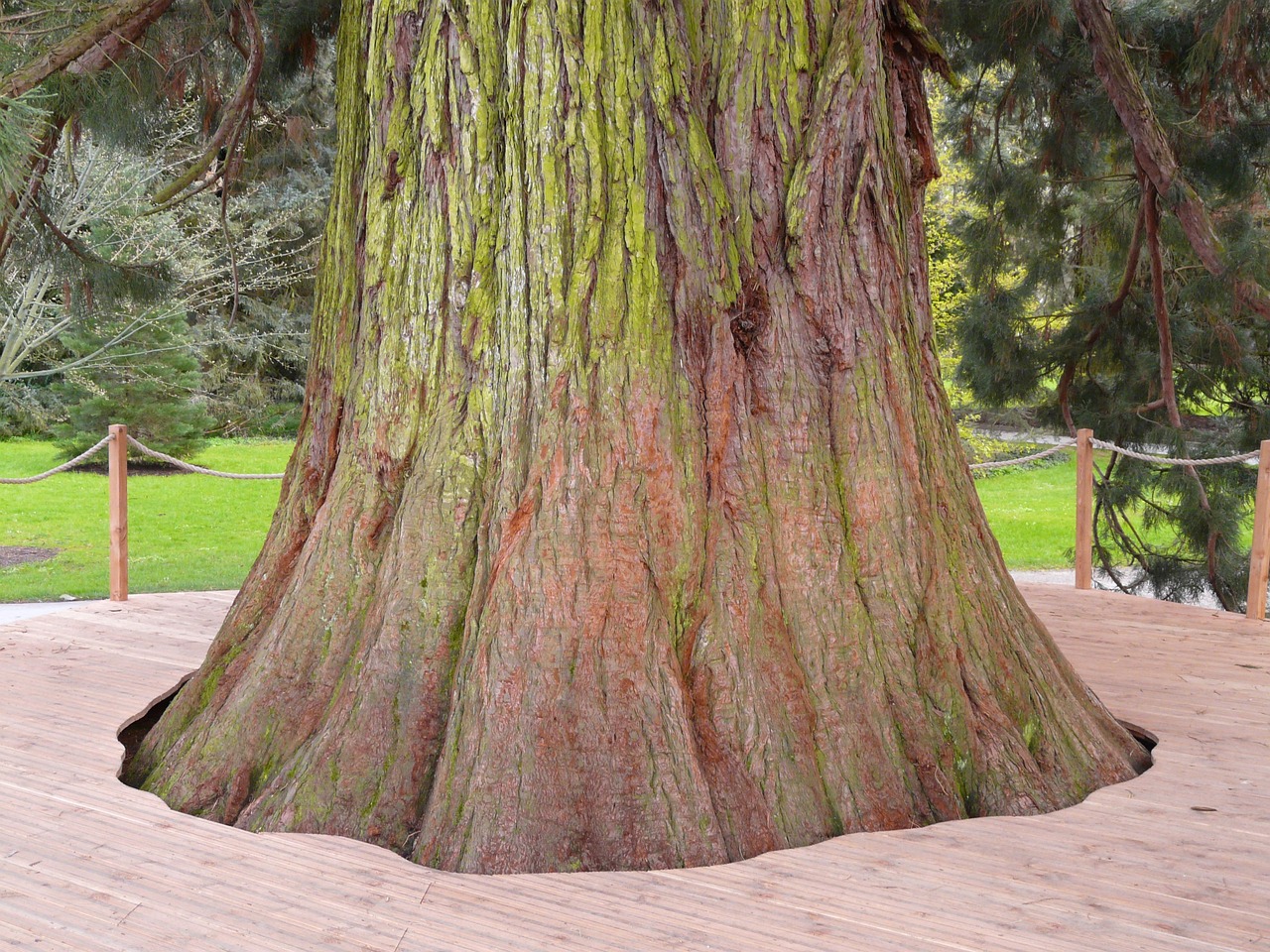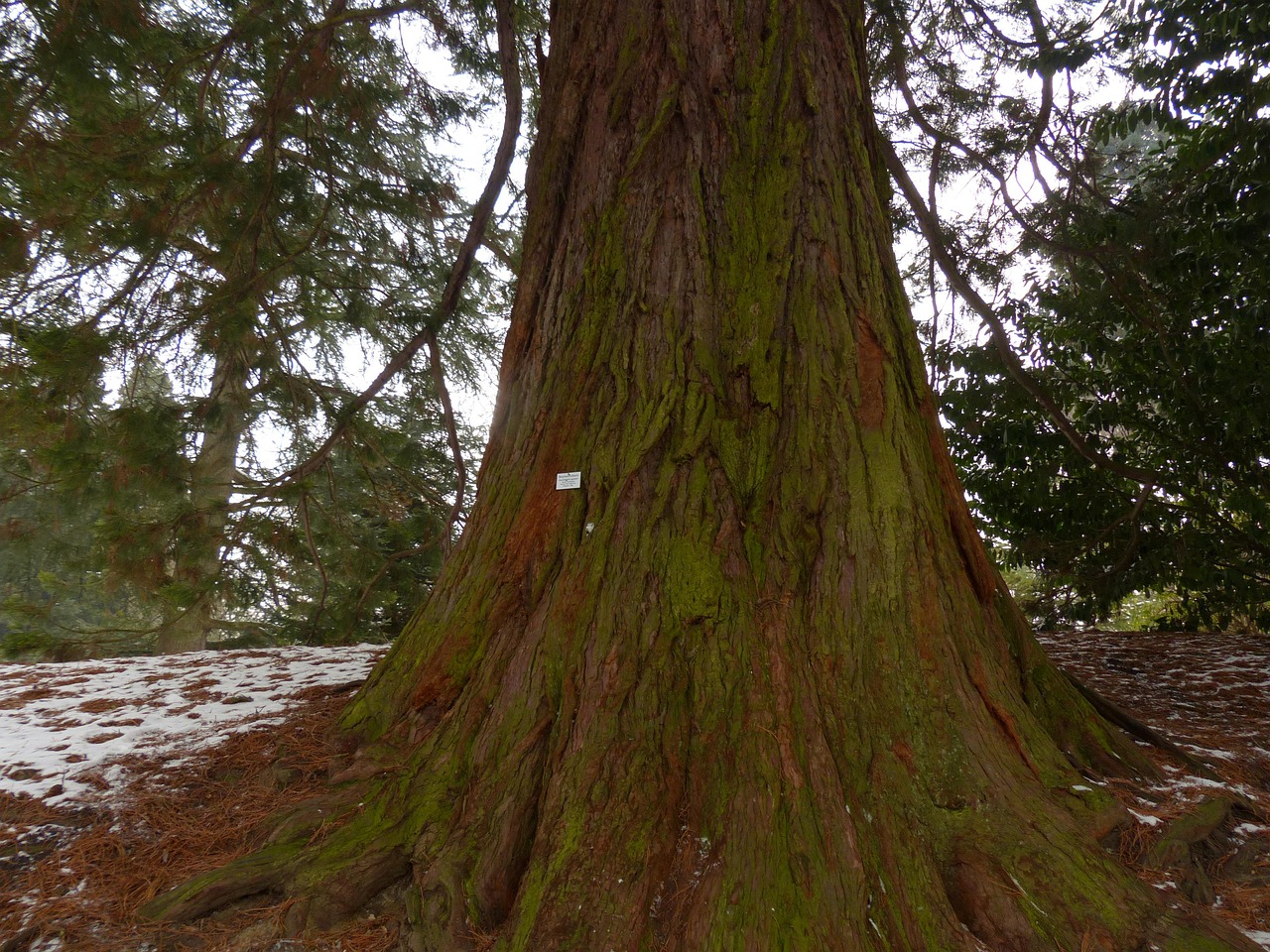Tree diameter growth rate tracking is essential for forestry studies as it helps researchers understand tree health, age, and overall ecosystem dynamics. By measuring tree diameter over time, scientists can assess growth patterns, evaluate forest management practices, and contribute to sustainable forestry efforts.
Forestry plays a critical role in maintaining ecological balance and providing resources. Trees are vital components of the environment, offering numerous benefits such as carbon sequestration, habitat for wildlife, and timber for various industries. Understanding how trees grow is fundamental for effective forest management.

One of the key metrics in forest studies is the diameter at breast height (DBH). DBH is a standard measurement used to estimate the size and growth rate of trees. Tracking this metric over time allows researchers to monitor changes that indicate the health and sustainability of a forest ecosystem.
Importance of Tree Diameter Growth Rate
The growth rate of a tree’s diameter can provide significant insights into its overall health and the conditions of its environment. Several factors influence tree diameter growth rates, including soil quality, water availability, and competition with other vegetation. By analyzing these growth rates, researchers can draw important conclusions regarding forest management and conservation strategies.
In many regions, trees are being impacted by climate change, disease, and urban development. These pressures can alter growth rates, which may lead to changes in forest composition. Monitoring tree diameter growth rates is therefore crucial for identifying trends and implementing effective management strategies.

Key Factors Influencing Growth Rates
Several factors can affect the growth rate of a tree’s diameter. Here are some of the most significant:
- Soil Quality: The nutrient content and structure of the soil can significantly impact tree growth.
- Water Availability: Adequate moisture is essential for healthy growth; drought conditions can slow down diameter increase.
- Light Exposure: Trees that receive ample sunlight generally have faster growth rates than those in shady environments.
- Competition: Nearby vegetation can compete for resources, affecting the growth of individual trees.
- Pests and Diseases: Infestations or infections can stunt growth or even lead to tree death.
Methods for Measuring Diameter Growth
Accurate measurement of tree diameter growth involves specific techniques and tools. Common methods include:
- Calipers: Specialized calipers measure the DBH precisely at a standardized height.
- Tape Measures: Flexible measuring tapes can be used to wrap around the trunk and calculate diameter based on circumference.
- Increment Borers: These tools extract a core sample from the tree, allowing researchers to study growth rings and assess historical growth rates.
The choice of method depends on the specific research goals and the type of data required. Consistency in measurement practices is crucial for reliable data collection over time.

Data Collection and Analysis
Once tree diameters are measured, collecting and analyzing this data is essential for drawing meaningful conclusions. Researchers often use statistical methods to evaluate growth trends over time. This analysis can reveal patterns related to environmental changes, management practices, or species-specific growth behaviors.
Data collected from multiple trees across various sites can be compiled into a comprehensive dataset. This dataset can help in creating predictive models that forecast future growth under different environmental scenarios.
| Measurement Method | Advantages | Disadvantages |
|---|---|---|
| Calipers | High accuracy; easy to use | Requires careful positioning |
| Tape Measures | Inexpensive; widely available | Less accurate than calipers |
| Increment Borers | Provides historical data through rings | Invasive; may damage tree |
The integration of technology in data collection has also enhanced accuracy. Remote sensing tools, such as drones and satellite imagery, are increasingly used to monitor large forest areas efficiently.
The combination of traditional methods with modern technology provides a robust framework for understanding tree diameter growth rates in forestry studies. By continually refining these approaches, researchers can better support sustainable forestry practices and ensure the health of forest ecosystems for future generations.

Challenges in Tracking Tree Diameter Growth Rates
Despite the importance of tracking tree diameter growth rates, several challenges exist that can complicate data collection and analysis. Addressing these challenges is essential for obtaining accurate and meaningful results in forestry studies.
Environmental Factors
Environmental conditions can significantly affect the growth rates of trees. Some of the challenges include:
- Climate Variability: Changes in temperature and precipitation patterns can influence tree growth. For instance, prolonged droughts can slow growth, while excessive rainfall might lead to root problems.
- Soil Conditions: Variations in soil quality, including nutrient availability and pH levels, can hinder growth rates. Poor soil conditions often result in stunted growth.
- Invasive Species: The introduction of non-native species can disrupt local ecosystems. These invasive species may outcompete native trees for resources, affecting their growth.
Measurement Errors
Accurate measurement is crucial for tracking growth rates. Several factors can contribute to errors in measurement:
- Human Error: Inconsistent measuring techniques or miscalculations can lead to inaccurate data. Training and experience are vital for ensuring measurements are taken correctly.
- Equipment Limitations: Different tools have varying levels of precision. Using inappropriate or poorly calibrated instruments can introduce errors.
- Tree Characteristics: Trees grow unevenly due to factors such as branching or irregular shapes, making it difficult to obtain consistent diameter measurements.
The Role of Technology in Overcoming Challenges
Advancements in technology offer promising solutions to address the challenges associated with tracking tree diameter growth rates. Technologies such as remote sensing, machine learning, and Geographic Information Systems (GIS) can enhance accuracy and efficiency.
Remote Sensing Technologies
Remote sensing involves collecting data from a distance using aerial or satellite imagery. This technology provides numerous benefits:
- Large Area Coverage: Remote sensing allows researchers to monitor extensive forest areas quickly, which is particularly useful in large-scale studies.
- Multispectral Imaging: This technology can provide insights into vegetation health and growth patterns by capturing data across various wavelengths.
- Change Detection: Remote sensing can help identify changes in forest structure over time, aiding in the assessment of growth rates and health.
Machine Learning and Data Analysis
The integration of machine learning algorithms into forestry research is transforming how data is analyzed. Machine learning can help identify patterns and relationships within large datasets, allowing for improved understanding of growth dynamics. Some ways machine learning is applied include:
- Predictive Modeling: Algorithms can predict future growth rates based on historical data, providing valuable insights for forest management.
- Anomaly Detection: Machine learning can identify unusual growth patterns that may indicate health issues or environmental stressors.
- Data Integration: Machine learning facilitates the integration of diverse data sources, enabling researchers to analyze multiple variables simultaneously.
The Importance of Long-Term Studies
Long-term studies are essential for accurately assessing tree diameter growth rates. These studies provide comprehensive insights into how trees respond to various environmental factors over time. Key aspects include:
- Seasonal Variation: Trees may exhibit different growth rates during different seasons. Long-term studies allow researchers to account for these variations.
- Impact of Disturbances: Over time, disturbances such as fires, storms, or pest infestations can affect forest dynamics. Long-term data helps in understanding recovery patterns.
- Cumulative Effects: Long-term research captures cumulative effects of environmental changes on tree growth, offering a clearer picture of sustainability trends.
Case Studies and Their Insights
Several case studies have shown the benefits of long-term monitoring of tree diameter growth rates. For example, studies conducted in temperate forests have demonstrated how climate change impacts tree growth differently across species. By continuously monitoring these trees, researchers can adapt management practices accordingly.
Another case study involving tropical rainforests highlights how deforestation and land use changes affect diameter growth rates. By analyzing long-term data, scientists have been able to propose more sustainable land management strategies that balance economic needs with ecological preservation.
The insights gained from these studies underscore the importance of long-term monitoring in fostering sustainable forestry practices and improving our understanding of forest ecosystems.
Forest Management Practices and Their Impact on Growth Rates
Effective forest management is crucial for promoting healthy tree growth and maintaining biodiversity. Various practices can influence tree diameter growth rates, thereby affecting the overall health of forest ecosystems.
Silvicultural Techniques
Silviculture encompasses the methods used to cultivate and manage forests. Several techniques are employed to enhance tree growth, including:
- Thinning: This practice involves selectively removing trees to reduce competition for resources such as light, water, and nutrients. Thinning can lead to increased growth rates in remaining trees.
- Clear-Cutting: In this method, all trees in a specific area are removed. While it can stimulate growth in the short term, it may also lead to soil erosion and habitat loss if not managed sustainably.
- Selective Cutting: Unlike clear-cutting, selective cutting involves removing only certain trees while preserving the overall forest structure. This method helps maintain biodiversity and ecosystem stability.
Impact of Forest Health on Growth Rates
The health of a forest significantly influences tree diameter growth rates. Several factors can impact forest health, including:
- Pest Infestations: Insects and diseases can weaken trees, reducing their ability to grow. Monitoring pest populations and implementing control measures is essential for maintaining forest health.
- Invasive Species: Non-native plants can outcompete native species for resources, negatively impacting growth rates. Forest managers must actively manage invasives to promote healthy ecosystems.
- Forest Fires: Though often destructive, fires can play a natural role in forest regeneration. They can clear old growth and provide opportunities for new species to thrive, but careful management is needed to prevent uncontrolled fires.
Environmental Conservation and Sustainable Practices
Sustainable forestry practices aim to balance ecological needs with economic interests. These practices are vital for preserving forest ecosystems while ensuring that resources remain available for future generations. Some key sustainable practices include:
- Reforestation: Planting new trees in deforested areas is essential for restoring ecosystem balance and enhancing carbon sequestration capabilities.
- Agroforestry: This practice combines agriculture with forestry, allowing for diversified land use that supports both tree growth and agricultural production.
- Certification Programs: Programs such as the Forest Stewardship Council (FSC) set standards for sustainable management practices, encouraging environmentally friendly forestry operations.
Community Engagement in Forestry
Involving local communities in forestry management is essential for successful conservation efforts. Communities often have valuable knowledge about local ecosystems and can contribute to sustainable practices. Engagement strategies include:
- Education Programs: Providing education about sustainable practices helps communities understand the importance of forest conservation and encourages responsible management.
- Collaborative Management: Involving local stakeholders in decision-making processes fosters a sense of ownership and accountability, leading to better outcomes for forest health.
- Economic Incentives: Offering financial incentives for sustainable practices can motivate communities to engage in conservation efforts while benefiting economically.
The Future of Tree Diameter Growth Rate Tracking
The field of forestry is evolving with advancements in technology and scientific research. Future developments may significantly enhance tree diameter growth rate tracking. Some emerging trends include:
- Big Data Analytics: The ability to analyze vast amounts of data collected from various sources will improve understanding of growth patterns and environmental impacts.
- Drones and Robotics: These technologies are increasingly being used for monitoring tree health and growth rates over large areas with minimal human intervention.
- Climate Adaptation Strategies: As climate change continues to affect forests, developing adaptive management strategies will be crucial for sustaining tree growth and ecosystem health.
The Role of Policy in Forestry Management
Effective policy frameworks are essential for promoting sustainable forestry practices and protecting forest ecosystems. Policies should focus on:
- Regulation of Logging Activities: Establishing guidelines that limit logging practices helps protect forests from over-exploitation.
- Funding for Research: Supporting research initiatives can lead to improved understanding of tree growth dynamics and effective management strategies.
- International Cooperation: Collaboration between countries is necessary to address transboundary environmental issues and promote global forest conservation efforts.
The Interconnectedness of Ecosystems
The health of tree populations is not isolated; it is interconnected with other components of the ecosystem, including soil health, water resources, and wildlife. Understanding these relationships is vital for effective management. Some aspects to consider include:
- Biodiversity: A diverse range of species contributes to ecosystem resilience, enhancing the ability of forests to adapt to environmental changes.
- Soil Health: Healthy soils support tree growth by providing essential nutrients and improving water retention.
- Water Resources: Trees play a crucial role in maintaining the water cycle, impacting local climates and soil moisture levels.
This interconnectedness highlights the need for holistic approaches to forestry management that consider the entire ecosystem rather than focusing solely on individual species or metrics. By fostering a comprehensive understanding of these relationships, researchers and practitioners can promote healthier forests and sustain their benefits for future generations.
Future Perspectives on Tree Diameter Growth Rate Tracking
As the field of forestry continues to evolve, new methodologies and technologies will further enhance our understanding of tree diameter growth rates. Innovations in data collection and analysis will likely lead to more precise measurements and insights into forest dynamics. Here are some areas that hold promise for the future:
- Integration of Sensors: The use of ground-based and aerial sensors can provide real-time data on environmental conditions, allowing for continuous monitoring of tree health and growth.
- Citizen Science: Engaging the public in data collection can increase awareness and provide valuable data from diverse locations. Mobile applications can facilitate participation in forestry research.
- Machine Learning Enhancements: As algorithms improve, machine learning can identify complex patterns in growth data that were previously undetectable, leading to better predictive models.
Adaptation to Climate Change
Climate change poses significant challenges to forestry, affecting growth rates, species distribution, and forest health. Adaptive management strategies will be necessary to mitigate these impacts. Key considerations include:
- Species Selection: Choosing tree species that are more resilient to changing climate conditions can help maintain healthy forests.
- Water Management: Implementing systems to conserve water during droughts will support tree health and growth.
- Monitoring Ecosystem Services: Understanding how trees contribute to ecosystem services like carbon storage and air purification can inform better management practices.
Policy Implications and Support
Effective policies are essential for promoting sustainable forestry practices and protecting forest ecosystems. Policymakers should consider the following:
- Support for Research Funding: Investing in research can lead to advancements in understanding tree growth dynamics and sustainable practices.
- Incentives for Sustainable Practices: Financial incentives for landowners who implement sustainable forestry practices can encourage more responsible management.
- Collaboration Across Sectors: Engaging various stakeholders, including government, industry, and local communities, fosters a holistic approach to forest management.
Conclusion
Tree diameter growth rate tracking is a vital aspect of forestry studies, providing essential insights into tree health, ecosystem dynamics, and sustainable management practices. This comprehensive understanding is crucial for addressing the challenges posed by climate change, ecosystem degradation, and human impact on forests.
The integration of traditional methods with modern technology enhances the accuracy of growth rate assessments, while long-term monitoring provides invaluable data for making informed decisions. As we move forward, it is imperative to adopt holistic approaches that consider the interconnectedness of ecosystems. By fostering collaboration among researchers, policymakers, and communities, we can ensure that forestry practices support both ecological integrity and economic viability.
Ultimately, the future of forestry lies in balanced management that prioritizes sustainability while recognizing the critical role that trees play in our environment. Through continued research, innovative practices, and community involvement, we can cultivate healthier forests that thrive for generations to come.
